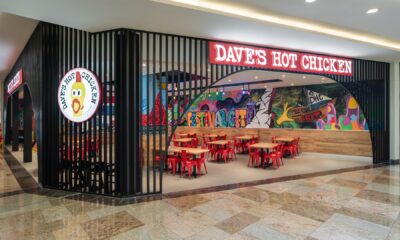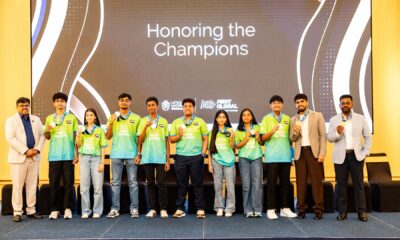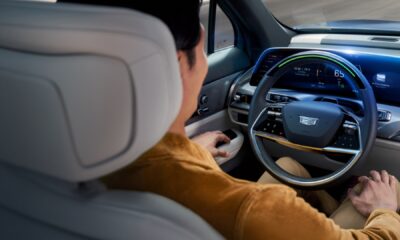Automotive
From Sand to Street: Seven Decades of The Nissan Patrol’s Grit and Glory

Discover the history of the beast that eats boulders for breakfast and smokes tarmac for dinner.
From Australia’s Outback to the Arabian dunes, the Nissan Patrol is an unstoppable machine that redefined rugged. Over seven decades and generations, the Nissan Patrol has gained worldwide reverence for its immense off-roading prowess and rock-solid ruggedness. Over this part of the green globe, the Patrol is a true icon with a legendary stature and cult following. It has remained one of the best-selling models in the Middle East for quite a long time now. In 2023, the Patrol was the second-best-selling car model in the UAE, second only to the Nissan Sunny. We expect this success streak to continue with the newly introduced, latest, and arguably the greatest seventh-generation Patrol. But then, have you ever wondered how a rugged SUV managed to achieve such a high degree of respect and veneration? To comprehend that, you should gain a full understanding of the war-battling, dune-bashing, turbo-whistling history of this legendary SUV. Let’s dissect the annals of the Nissan Patrol, generation by generation.
First Generation (4W60) 1951-1960: The One That Conquered Mount Fuji
The original Nissan Patrol was an old-school midsize off-roader. It was very much redolent of the Willys Jeep, that it was nicknamed the Nissan Jeep. The 4W60 shares its birth year with yet another living legend — the Toyota Land Cruiser.

Initially exclusive to the Japanese market, the 4W60 was exclusively a petrol-powered, 4-wheel-drive vehicle offered in SUV and wagon configurations. The first-gen Nissan Jeep SUVs were powered by a 3.7-liter inline-6 engine, sourced from the Nissan 290 bus of the time, exclusively mated to a 4-speed manual transmission. The original Patrol demonstrated its exceptional off-roading prowess by attaining a groundbreaking achievement. It was the first car to conquer Mount Fuji — a 2,500-meter ascend.
For the first time, the maiden Patrol was bestowed with a refresh in 1955, marking the debut of the 4W61 Patrol. The 4W61 brought forth a few cosmetic changes along with a powertrain upgrade, replacing the 3.7-liter with a new 4.0-liter inline-6. However, the “Nissan Jeep” donned the iconic Patrol appellation for the first time only in 1958, when the 4W65 iteration was introduced. Thus, the legendary nameplate was born, seven years after the birth of the legend itself. The first Patrol arrived at the Middle-Eastern shores in 1957, specifically in Kuwait. It quickly garnered attention and appreciation for its all-terrain capabilities.
Second Generation (60 Series) 1959-1980: The One That Crossed The Simpson Desert
The second generation Nissan Patrol arrived in 1959, with an expanded portfolio comprising more configurations to choose from. Dubbed the 60 Series, the second-gen Nissan Patrol was produced in short, medium, and long wheelbase versions with soft-top hard-top, and wagon body style options.

It was also the first Patrol to be extensively exported to other global markets, including the USA, Australia, Canada, and the Middle East. In fact, the Patrol was the first model to be sold in the U.S. as a Nissan-badged car. All 60 Series Patrol models continued to be powered by a 4.0-liter inline-6 motor, which initially came paired with a 3-speed manual transmission which was later upgraded to a 4-speed manual.

While the first Patrol attained glory by climbing a mountain, the second one crossed a desert to amass eminence. In 1962, a short-wheelbase hard-top Nissan Patrol crossed the Simpson Desert, which spans across the Northern Territory, South Australia, and Queensland in central Australia. The course, traversing an extensive expanse of around 1,100 dunes, was completed in 12 days, and Nissan Australia claims that this Patrol was the first motorized vehicle to achieve this feat.
On another side of the world, the Indian army obtained a license from Nissan to manufacture their own version of the 60 Series Patrol in the early sixties. Named the Nissan Jonga (Jabalpur Ordnance and Guncarriage Assembly), this military-spec Patrol proved itself in the 1965 and 1971 wars and later in several counter-insurgency operations across the country. Further down the line, a civilian version of the Jonga was sold to the public, marking the Patrol’s official (kind of) presence in India too. It is also noteworthy that it was during the era of the 60 Series Patrol, specifically in 1968, when the AW Rostamani Group established Arabian Automobiles, which is now the largest and sole distributor of Nissan cars in the UAE.
Third Generation (160 Series) 1980-1989: The One That Ranked In The Paris-Dakar
The successor to the 60 Series Patrol arrived in 1980 and was christened with the model code 160. The third generation Patrol was the first of its kind to address the needs of and appeal to all kinds of consumers, whereas the first two generations were more purpose-built vehicles.

The 160 Series introduced several novelties, including an automatic transmission, a 5-door body style, a seven-seater cabin layout, and air conditioning. On top of that, the Patrol was now offered with multiple petrol and diesel engine options. The 160 Series can be considered the first Patrol for the masses, as it came outfitted with desirable amenities and convenience features.
The successor to the 60 Series Patrol arrived in 1980 and was christened with the model code 160. The third generation Patrol was the first of its kind to address the needs of and appeal to all kinds of consumers, whereas the first two generations were more purpose-built vehicles. The 160 Series introduced several novelties, including an automatic transmission, a 5-door body style, a seven-seater cabin layout, and air conditioning. On top of that, the Patrol was now offered with multiple petrol and diesel engine options. The 160 Series can be considered the first Patrol for the masses, as it came outfitted with desirable amenities and convenience features.

However, no compromises were made to achieve these positives, as the Patrol continued to exemplify its immense resilience. The third-generation Patrol achieved a milestone in 1987, becoming the first diesel-powered vehicle to ever finish in the top 10 of the fabled Paris Dakar Rally. This mighty victory wasn’t an easy venture for the Patrol. Nissan partnered up with Coca-Cola and enrolled two vehicles enshrouded in a bright yellow Fanta-Limón livery for the 13,000 km race across Europe, Algeria, Mali, Mauritania, and Senegal. Unfortunately, the team’s support truck broke down during the second stage of the rally, while one of the two participant trucks met a catastrophic fate after rolling down a dune. Despite the unfortunate circumstances, the remaining Patrol, managed to complete the race, that too without spares and support. This superlative feat further concreted the Patrol’s reputation as a formidable 4×4 SUV in the global automotive landscape. The third-generation Nissan Patrol was also the first to be called the Nissan Safari in Japan, a name that later gained global fame.
Fourth Generation (Y60) 1989-1997: The One That Blended Luxury With Performance
The fourth generation Nissan Patrol code-named Y60 was a massive innovative leap in terms of comfort and convenience. The most prominent advancement was the upgrade to an all-around coil-spring suspension setup, which was state-of-the-art technology at the time, compared to the leaf-spring setup of its predecessors.

This major milestone in the path of the Patrol’s evolution was also complemented by the addition of power steering and synchro mesh in reverse gear. This trio of upgrades elevated the Nissan Patrol into the luxury segment, while its inherent ruggedness remained intact and unaffected. Nissan essentially uplifted the Patrol into a realm previously dominated by purebred luxury SUVs lik the Range Rover of the time.
Fifth Generation (Y61) 1997- Present: The One Adored By The Middle East

The fifth generation is arguably the most iconic and influential Nissan Patrol ever. Nissan revealed the fifth generation Patrol, code-named Y61, in December 1997, thus transcending the model’s rock-solid reputation into the modern automotive era. It was a comprehensive redesign, introducing a bunch of new powertrain options. The new design was truly revolutionary, featuring a sleeker body shape and a new V-shaped grille. The interior also flaunted upgraded materials, while the feature set was updated with additions including satellite navigation and a reverse camera.

The Y61 Patrol is easily the most iconic, evocative generation of the mighty off-roader, gaining a worldwide reputation for its massive 4.8-liter TB48DE inline-6 motor (massive for an inline-6). Such high-displacement 6-cylinder motors are a rare sight nowadays, and this configuration made the Y61 a creamy smooth SUV with plenty of torque available across the rev range. The sturdy, brawny motor was also exceptionally tuner-friendly, which was properly exploited by enthusiasts, especially in the Middle East. The TB48DE could handle north of 2,000 horsepower, which made it the emperor of both the dunes and roads. The Y61 was so influential in the Middle East that it was reincarnated exclusively for the said market in 2017.

Dubbed the Nissan Patrol Super Safari, the new variant was an updated version that retained the original appeal while adding some touches of modernity. As expected, it was powered by the renowned 4.8-liter inline-6, mated to a 5-speed automatic transmission. While the exterior remained mostly identical to the original Y61, the Super Safari’s interior featured novelties including powered front seats, Bluetooth connectivity, automatic climate control, and more. Followed by the success of the Super Safari, Nissan launched its even cooler 3-door version —also known as the Hard Top version— in the Middle East. While the body style is different, the specifications and feature set remained the same.
Sixth Generation (Y62) 2010-Present: The One With 8 Cylinders And A NISMO Badge

The sixth generation Nissan Patrol code-named Y62 was unveiled in February 2010 in Abu Dhabi. This is the Patrol model we now see abundantly on UAE roads in its various iterations (mostly Platinum and NISMO). The new Patrol was longer and wider than ever, and this time there was no short-wheelbase model on offer. The Patrol had now transformed into a beefier full-size SUV that offered superior cabin space while not compromising on off-roadability. Nissan also introduced a more luxurious, Infiniti-badged version of the Patrol dubbed the QX56 (later the QX80). It was the first Patrol-based vehicle to be sold in the North American market since, 1969. Later on, a direct iteration of the Patrol was introduced in North America in 2017, in the form of the Nissan Armada.
For the first time, the new Patrol was offered with a V8 motor, initially as the standard powertrain and later exclusively as a higher-end option. At first, this 5.6-liter V8 was the only powertrain offered with the Y62 Patrol, which produced 317 horsepower in the lower-spec and came paired with a 5-speed automatic transmission. The same motor churned out 400 horses in the higher-end configuration and was clubbed to a 7-speed automatic. Later on, the base V8 was replaced by a 4.0-liter V6 that cranked out 275 horsepower and 394 nm of torque, while the lower-output V8 powertrain was discontinued. Also, initially, a manual transmission was offered with the base trim.

For 2014, Nissan facelifted the Patrol, adorning it with revised lighting elements, LED headlamps, a new interior shade, and a new set of wheels. The next major facelift happened in 2019 when the Patrol received a new, more angular front and bumpers, giving the mighty off-roader a modern flair and a sportier mien. This facelift also equipped the Patrol with Nissan’s Intelligent Mobility driver-assistance features.
Following this update, in 2021, we saw the birth of something new and paradigm-shifting. Nissan unveiled the first-ever Patrol NISMO variant, exclusive to the GCC countries. The Nissan Patrol NISMO featured signature, NISMO-specific elements including sportier front and rear fascia, a red and black interior with carbon fiber accents, 22-inch 2-tone alloys, and a set of Bilstein shocks for enhanced handling. Powering the Patrol NISMO was the same 5.6-liter V8, which was tuned to produce a higher output of 428 horsepower and 560 nm. Now that the new and latest generation Y63 2025 Nissan Patrol is exclusively V6-powered, the Y62 achieves a future-collectible status, as the only factory-V8-powered Nissan Patrol. This makes the NISMO version even more desirable.
Seventh Generation (Y63) 2024+: The One That Continues The Legacy

Now for the latest flag-bearer of the Patrol legacy, as Nissan calls it — their “symbol of adventure, pride, and resilience in the Middle East”. The all-new Nissan Patrol was unveiled on the 3rd of September. The new generation builds on its immediate predecessor with a wave of modernity inside out, while retaining the Patrol’s inherent boldness and ruggedness. The new Patrol looks cutting edge and comes laden with more advanced underpinnings and technology features.
The new Nissan Patrol is powered exclusively by a pair of V6 powertrain options. The base version is a 3.8-liter naturally aspirated V6, producing 316HP and 386Nm of torque. The heart of the matter is the new high-end powertrain, a 3.5-liter twin-turbo V6 that cranks out 425HP and 700Nm of torque. Both engines come mated to a new 9-speed automatic transmission.

Inside the all-new Patrol, you are treated with all sorts of tech features expected from a contemporary luxury SUV. The infotainment setup has been upgraded with a new 28.6-inch horizontal Monolith display, featuring twin 14.3-inch touchscreens with Google built-in. Complementing this high-end central infotainment system is a 12-speaker Klipsch Premium audio system, offering a proprietary surround sound setup optimized for the Patrol. The latest Patrol is undoubtedly a thorough upgrade over the one it succeeds, and this groundbreaking update endows the Patrol with futuristic characteristics while keeping its rugged DNA intact.
Automotive
Emarat Showcases Emojet’s Aviation Fuel Leadership at Dubai Airshow 2025
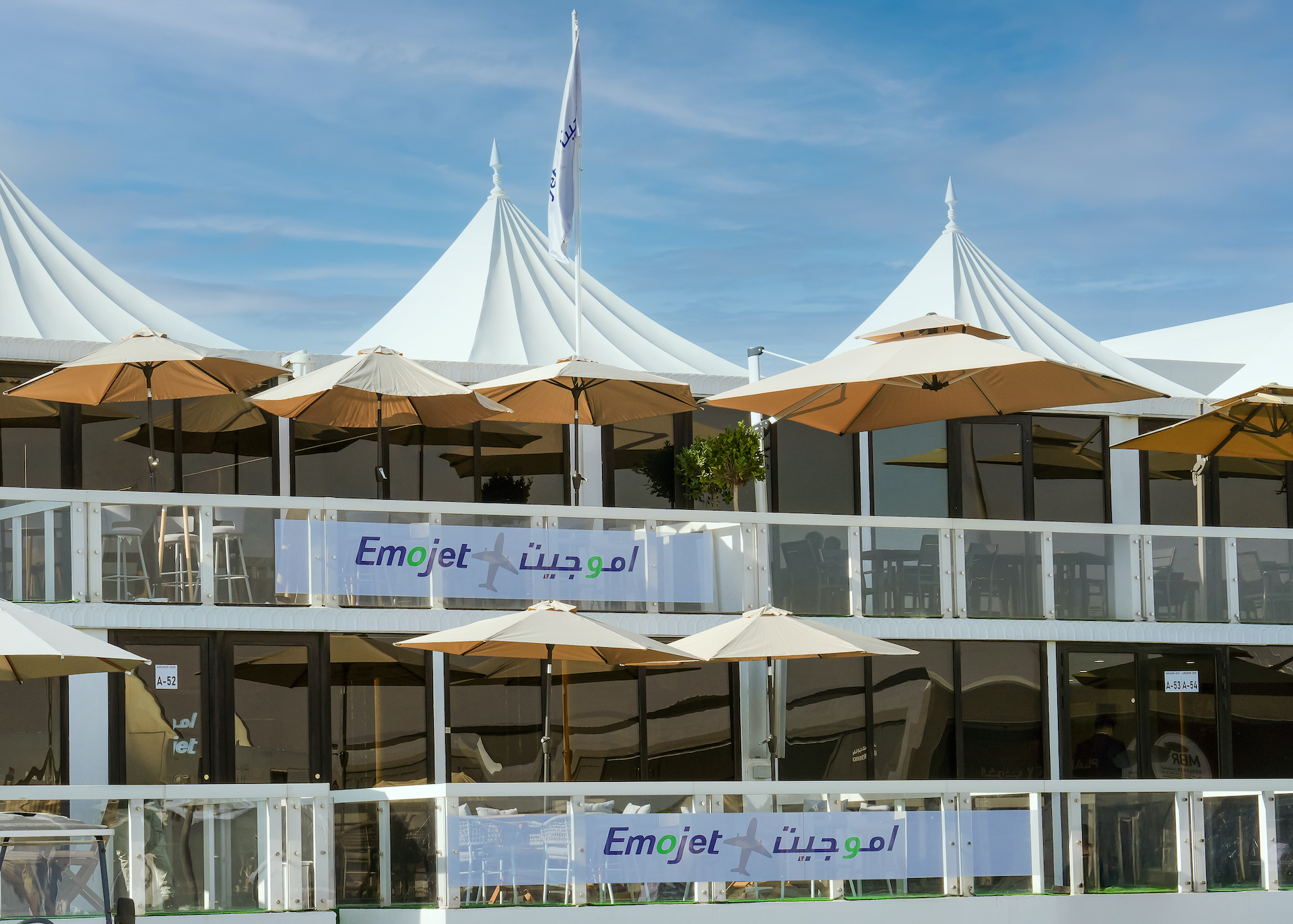
Emirates Petroleum Company PJSC (Emarat), a pioneer in the UAE’s oil and gas industry, will highlight the strength of its aviation fuel business at Dubai Airshow 2025 through its aviation subsidiary, Emojet, one of the leading into-plane fuel service providers at Dubai International Airport and Al Maktoum International Airport (Dubai World Central). Emojet will host airline, airport and industry partners at Chalet A52 from 17–21 November 2025, between 10:00 AM and 5:30 PM at Al Maktoum International Airport.
A key pillar of Emarat’s portfolio, aviation fuel is delivered through Emojet, which has proudly served the UAE’s world-leading aviation industry since 1992. Today, Emojet supplies aviation fuel to many of the world’s leading international airlines at Dubai International Airport and Al Maktoum International Airport, delivering award-winning into-plane services built on safety, reliability and service excellence.
Ali Khalifa Al Shamsi, Chief Executive Officer of Emarat, said, “Dubai Airshow is a natural platform for Emarat and Emojet. For more than three decades, we have been privileged to fuel the growth of the UAE’s aviation sector and support Dubai’s rise as a global hub for passengers and cargo. Through Emojet, we combine best-in-class infrastructure, rigorous safety and operational discipline with a partnership mindset that puts our customers’ network and growth ambitions at the centre. At Dubai Airshow 2025, we look forward to reinforcing our commitment to the aviation ecosystem and exploring new collaborations that will help shape the future of air connectivity in our region.”
At Dubai Airshow 2025, Emojet will focus on deepening existing relationships and building new partnerships with airlines, cargo operators, airports, and logistics players from across the region and beyond. This follows Emojet’s July 2024 agreement with Emirates SkyCargo to supply aviation fuel for the airline’s cargo operations at Al Maktoum International Airport – a model of the strategic collaborations the brand aims to replicate and expand during the show.
Salem Bin Suloom, Vice President – Aviation Sales at Emarat, said, “Emojet’s promise is simple – safe, reliable and efficient fueling, every time. Our customers operate in highly demanding environments, and they rely on us to deliver on-time performance, technical excellence and responsive service across every flight and every turnaround. At Dubai Airshow 2025, our focus is on listening to our partners, understanding their evolving operational needs and identifying new ways we can support them – whether through long-term supply agreements, expanded into-plane services, or new collaborations with airports and operators across the wider region. We warmly invite existing and prospective partners to visit us to discuss how Emojet can fuel their future plans.”
Emojet stands apart through its modern fleet of refuelling equipment, advanced control systems and highly trained operational teams. The company utilises the latest electronic data capture and interface systems to drive efficiency, accuracy and transparency, ensuring that its operations and equipment exceed mandated IATA standards.
Automotive
How Machine Learning Makes Super Cruise Smarter Every Day
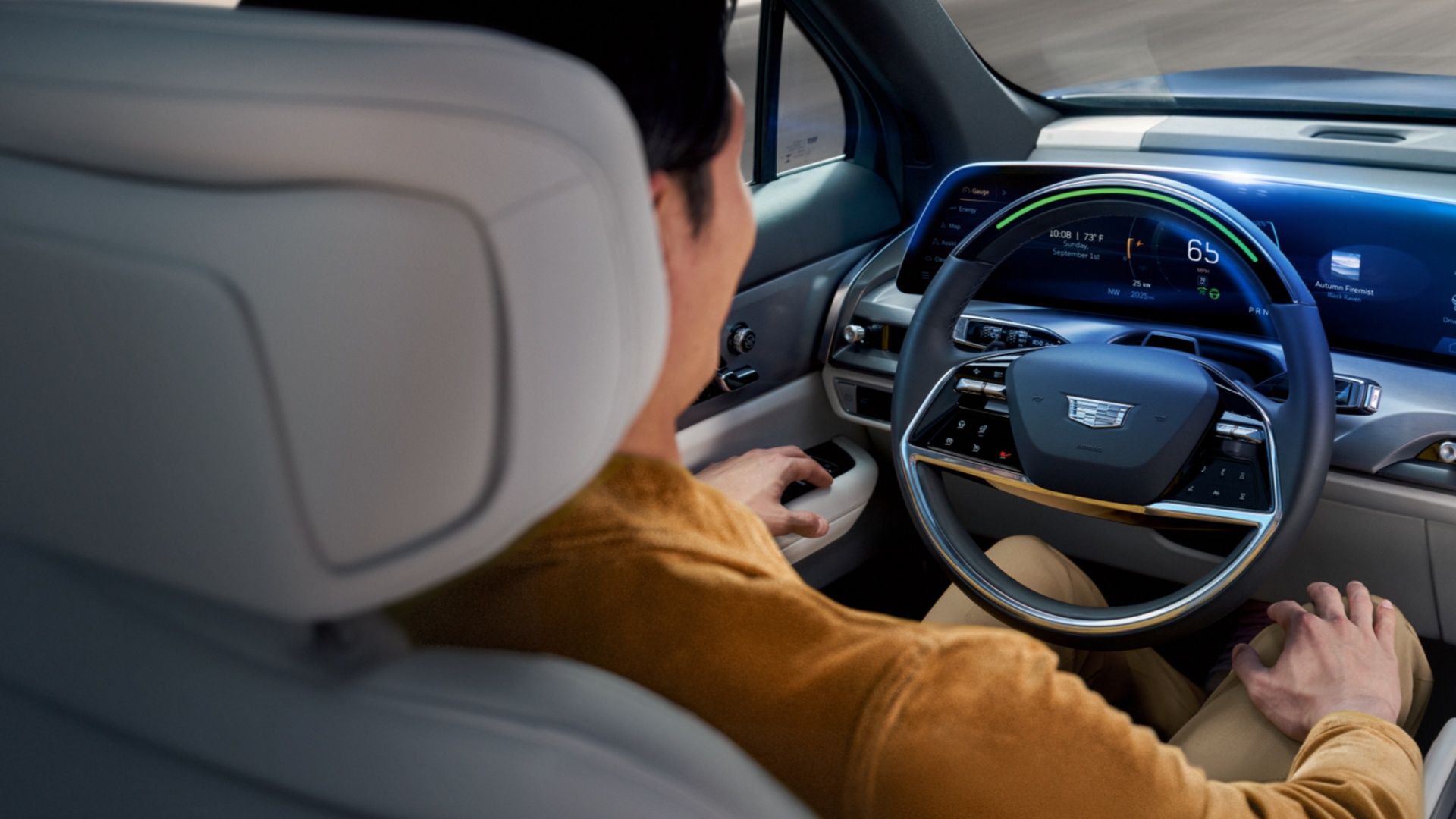
When technology works effortlessly, it’s easy to forget the incredible engineering behind it. That was the goal with GM’s Super Cruise hands-free driver assistance technology. Super Cruise is designed to execute precise lane centering, perform smooth lane changes, interact with a driver’s requests and handle steering maneuvers. These advanced capabilities are managed by a single, modular software stack called the Unified Lateral Controller, or ULC. Looking inside, GM engineers built a self-learning system made up of machine learning algorithms to update the vehicle’s dynamics and controls. The algorithm makes quick decisions to ensure efficiency.
Imagine you’re driving with Super Cruise engaged, and you initiate a left lane change with the turn signal. Super Cruise then starts to shift the vehicle into the left lane. But let’s say you then decide to stay in the current lane, so you signal to the right. Super Cruise will respond by bringing you back to the center of the original lane – a seemingly effortless transition, but one that requires complex and rapid calculations.
Super Cruise needs to maneuver as naturally as possible for drivers to remain comfortable and confident as they drive hands free. Diving deeper, the ULC must consider many data inputs: The curvature of the road from the LiDAR map data, lane geometry from the cameras, trajectory of the vehicle based on current speeds, vehicle load, current weather conditions, and the behavior of surrounding vehicles–all in a matter of seconds.
One of the unique features of Super Cruise is its ability to maintain precise hands-free lane centering while towing a trailer – a capability unmatched in the industry. One of Super Cruise’s standout features is its ability to maintain precise, hands-free lane centering even while towing a trailer—a capability unmatched in the industry and currently available on select GM vehicles. With a trailer attached, ULC automatically accounts in real time for the additional mass and its effects on vehicle dynamics, optimizing steering commands to control both the vehicle and the trailer.
The self-learning system analyzes real-time sensor data, enabling Super Cruise to make more accurate decisions and perform proactive adjustments, improving driver comfort and confidence over time. That allows Super Cruise to adapt for each vehicle and each driver in different environmental conditions.
Let’s go back to our trailering example: Tight lateral control is important for keeping both the vehicle and the trailer centered in the lane. The model learns how the presence of the trailer changes the vehicle’s steering response and works with the ULC to optimize its responses and keep the vehicle and trailer centered in the lane. This model also scales Super Cruise enabled by OnStar , and is now available across 13 vehicle models on select trims, and counting . No matter the shape, size, or weight of the vehicle, the ULC and our self-learning algorithms can adapt, reducing complexity. We’re bringing Super Cruise to consumers on more models, offering consistent, predictable, safe hands-free driving.
Automotive
Goodyear and Peugeot Drive the Future of Intelligent Mobility with the Polygon Concept Car

Goodyear and Peugeot have partnered to shape the future of intelligent mobility with the unveiling of the Peugeot Polygon concept car. This next-generation vehicle features Goodyear SightLine—an advanced suite of intelligent tire technologies—integrated directly into the cockpit for the first time alongside three bespoke Goodyear tires tailored to the car’s versatile configurations.
The Peugeot Polygon is designed to adapt to a range of driving styles through three distinct configurations, Urban, Player and Explorer, and Goodyear’s tires and solutions are uniquely designed to support the vehicle’s purpose.
The collaboration marks a milestone moment and a bold move toward seamless connectivity between vehicle and tire, delivering enhanced safety, performance, and driver confidence.
Goodyear SightLine Technology: Intelligence at Every Turn
Goodyear SightLine is a proprietary suite of smart tire technologies that provides real-time insights for safety and performance improvements in vehicles, from tire properties estimation, tire health information to road conditions. These insights can be displayed directly on the driver’s heads-up display, ensuring clarity and control throughout every journey, or it can be integrated into other advanced systems of a vehicle, allowing it to mitigate situations that are driver dependent today.
Across all Polygon configurations, SightLine features are accessible from the cockpit, offering:
• Tire Maintenance: Integrated tire wear monitoring enables vehicles to automatically adjust performance settings as tires age—helps ensuring optimal handling and safety throughout their lifecycle.
• Safe Driving: SightLine predicts and detects aquaplaning risks, allowing vehicle control systems to respond instantly and maintain stability, even in challenging conditions.
Goodyear delivers insightful journeys to Polygon drivers thanks to its integration with Peugeot Drive-by-Wire technology.
Ben Glesener, senior technology director, Product Development, Consumer EMEA, commented:
“SightLine represents more than technology—it’s a vision for connected mobility. By partnering with Peugeot, we are envisioning an ecosystem where tires become active contributors to vehicle intelligence, shaping a smarter future.”
Already available in several global markets, Goodyear SightLine is not just a concept—it’s a proven smart tire service ready for real-world applications.
Goodyear Tires: Built for Today’s Roads and Tomorrow’s Possibilities
As part of this visionary collaboration, Goodyear engineered three unique tires—each custom-designed to match the aesthetic and performance needs of the Polygon’s configurations:
- The Urban and Player tires feature the legendary Eagle F1 tread pattern, celebrating its 45th anniversary in 2025—a symbol of high-performance heritage.
- The Explorer tire pays tribute to the iconic Goodyear Wrangler, incorporating its rugged tread design to deliver traction to unleash unforgettable off-road experiences.
Beyond performance, the sidewall designs were crafted to visually express a new era of automotive innovation using coloring and laser technologies —where tire aesthetics and functionality converge to push the boundaries of design.
This collaboration showcases Goodyear’s long-standing expertise in combining craftmanship with premium manufacturing technologies to deliver the highest levels of customization from product performance to aesthetics.
Together, Goodyear and Peugeot are setting new trends and driving a new era—where every journey is smarter and more expressive.
-

 Tech News1 year ago
Tech News1 year agoDenodo Bolsters Executive Team by Hiring Christophe Culine as its Chief Revenue Officer
-

 VAR7 months ago
VAR7 months agoMicrosoft Launches New Surface Copilot+ PCs for Business
-

 Tech Interviews2 years ago
Tech Interviews2 years agoNavigating the Cybersecurity Landscape in Hybrid Work Environments
-

 Tech News4 months ago
Tech News4 months agoNothing Launches flagship Nothing Phone (3) and Headphone (1) in theme with the Iconic Museum of the Future in Dubai
-

 Tech News2 years ago
Tech News2 years agoBrighton College Abu Dhabi and Brighton College Al Ain Donate 954 IT Devices in Support of ‘Donate Your Own Device’ Campaign
-

 Editorial12 months ago
Editorial12 months agoCelebrating UAE National Day: A Legacy of Leadership and Technological Innovation
-

 VAR1 year ago
VAR1 year agoSamsung Galaxy Z Fold6 vs Google Pixel 9 Pro Fold: Clash Of The Folding Phenoms
-

 Cover Story9 months ago
Cover Story9 months agoUnifonic Leading the Future of AI-Driven Customer Engagement








